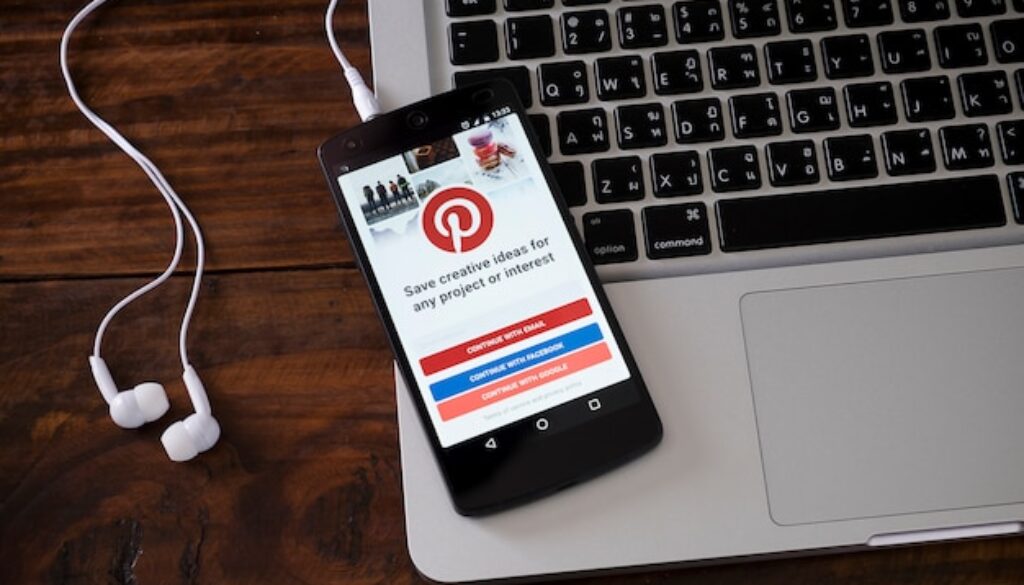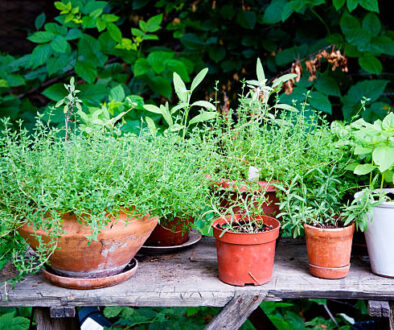Pinterest Affiliate Marketing: Earn Money by Creating Pins
If you’ve ever asked yourself how people are making money on Pinterest, you’re not the only one.
I used to scroll through pins thinking, “Wait… are people really getting paid for doing this?” The answer is yes, they are, and you can too.
This isn’t some complicated setup either. You can make money pinning on Pinterest by using affiliate links the right way.
You don’t need a blog, a huge following, or to be tech-savvy.
Just some good pins, right links, and a bit of strategy.
I’ll show you exactly how to pin on Pinterest so your content actually makes you money.
Whether you’re looking for a new money hustle or just want to try something easy from home, making money with Pinterest is totally doable.
Stick around and I’ll walk you through what works, what doesn’t, and how to turn your pins into passive income.
Quick Note: I made $3,647 in a month with Pinterest by using this one simple strategy — and you don’t need a blog or experience to do it. Download the Free Guide Here!
Let’s get into this simple, real-life money-making method.
Related:
- 12 Reasons you’re not going viral on Pinterest
- How to Make Money Using Pinterest: Easy Tips & Strategies
1. What Is Pinterest Affiliate Marketing (and Why It Works)
Let’s keep this super simple. Pinterest affiliate marketing means you create pins that link to products or services.
When someone clicks your pin and makes a purchase, you get a commission. That’s it.
No need to handle products, no shipping, no customer service. You just make the pin, add your affiliate link, and let Pinterest do the work.
Pinterest is a goldmine for this because it’s not like Instagram or TikTok where posts disappear fast.
Pins stay searchable for months. That means a pin you create today can still bring in clicks (and cash) a year from now.
It’s visual. It’s searchable. It’s long-lasting. That combo is exactly why making money with Pinterest is such a smart play, especially for beginners who want to start small.
2. How Affiliate Links Work on Pinterest
Not every program allows direct linking from Pinterest, but many do. Before you start posting links, always double-check the terms of the affiliate program. That said, there are two ways you can go about this:
Option 1: Direct-to-affiliate pins
You make a pin that links straight to your affiliate product. This works well for things like digital downloads or physical products where the landing page does the selling for you.
Option 2: Affiliate blog or landing page
This is where you create a blog post or page that includes your affiliate link, and your pin leads to that.
It gives people more context and increases the chance they’ll click “buy.”
- ▶▸ Get my easy-to-follow ebook on how to succeed fast with affiliate marketing here!
- ▶▸ Get the clear, simple system for creating digital products that sell Now!
Both ways can work. I like using both depending on what I’m promoting.
Just remember: always disclose when it’s an affiliate link. A simple note like “This pin contains affiliate links” keeps everything transparent and trust-worthy.
3. Setting Up Your Pinterest Account for Affiliate Success
Before you post a single pin, your account needs to be ready. Here’s what you need to knock out:
- Convert to a business account (it’s free and fast).
- Claim your website or blog (if you’re using one).
- Enable rich pins if you’re linking to content—these pull extra info like blog titles and descriptions.
- Create keyword-rich boards related to your niche.
Then, make sure your profile bio tells people what you’re all about. If you’re sharing deals, helpful tools, or digital products, make that clear. Keep it short and honest.
Also, don’t post one pin and disappear. Pinterest likes accounts that stay active. Try to pin a little daily, your own stuff and repins from others.
4. Choosing the Right Affiliate Programs
Not every affiliate program is a match for Pinterest. You want programs that allow direct linking (if you’re going that route) and offer things people actually search for on Pinterest.
Here are some solid options that work well with this strategy:
- Amazon Associates (note: doesn’t allow direct linking from Pinterest, but great for blog content)
- ShareASale
- Impact
- Rakuten
- Etsy Affiliate Program
- ClickBank
- Creative Market
- Canva’s Affiliate Program
Also, think about what people are already searching for when they’re on Pinterest. That’s your sweet spot.
Think home decor, beauty, side hustles, budget tools, kids’ activities, gift guides, meal prep stuff, basically anything that helps people solve a problem or get inspired.
5. Creating Pins That Drive Clicks and Sales
If your pins don’t look good, they won’t get clicks, no matter how great your affiliate link is.
Quick Note: I made $3,647 in a month with Pinterest by using this one simple strategy — and you don’t need a blog or experience to do it. Download the Free Guide Here!
You don’t need to be a designer, but you do need to pay attention to a few things.
Pin must-haves:
- Vertical format (1000×1500 pixels is perfect)
- Bold text overlay that’s easy to read
- Clear headline that hooks attention
- Bright colors and high contrast
- A call to action like “Shop Now” or “See More”
Make your pins stand out in the feed. Use Canva, it’s free, and they’ve got templates that make this whole thing much easier.
And always include your brand name or website at the bottom. Not huge, but visible. This helps build recognition if your pins get shared (which they will if they’re good).
6. Writing the Right Pin Description
Don’t skip this step. Your pin description helps Pinterest understand what your content is about. That means more eyes on your pin. Plus, this is where your SEO keywords come in.
Use natural sentences that include relevant phrases like:
- how to make money on Pinterest
- money hustle
- make money Pinterest
- making money on Pinterest
Here’s an example of a solid description:
“Looking for a new money hustle you can start from home?
Learn how to use Pinterest to promote affiliate products the smart way.
These simple tips show you how to make money on Pinterest even if you’re a total beginner.”
Add 3–5 hashtags related to your niche (#affiliatemarketing, #sidehustle, #makemoneyonline). That’s it. Keep it simple and helpful.
7. Pinning Strategy: When and How Often to Pin
Pinterest rewards consistency, not spamming. You don’t have to be online 24/7, but you should keep a steady rhythm.
Try this:
- Pin 5–10 times per day
- Mix your own pins with other people’s (keeps your feed active)
- Use a scheduler like Tailwind if you’re busy (it’s worth it)
- Create multiple pins for the same product/blog post, different designs, different headlines
And don’t freak out if a pin flops. Some take time to gain traction. Others go viral for no obvious reason. Keep pinning, learning, and testing.
8. What NOT to Do (If You Want to Stay Out of Trouble)
Let’s save you from mistakes right now. Pinterest has rules. Affiliate programs have rules. Ignore them, and you could get banned.
Here’s what to avoid:
- No spammy pins—don’t keyword stuff or post 50 pins in 10 minutes.
- Don’t hide affiliate links—especially using shady shorteners.
- Avoid clickbait headlines that trick users.
- Never skip disclosures. Always tell people it’s an affiliate link.
Pinterest wants creators to succeed, but you’ve got to follow their rules. Play smart and you’re good.
9. Using Pinterest to Support Other Income Streams
Here’s where things get fun. Affiliate marketing is great, but Pinterest can also boost other ways of making money. Like…
- Promoting YouTube videos (yep—how to make money on YouTube and Pinterest can go hand-in-hand)
- Growing your blog audience
- Selling your own digital products
- Building your email list with a lead magnet
You can combine everything. A pin leads to a blog post that promotes an affiliate product and builds your email list.
That email later promotes your course or new video. Boom—now you’re building a mini business.
It all starts with a pin.
10. Be Patient, But Stay Consistent
I’ll be honest, money making on Pinterest doesn’t usually happen overnight.
It’s a slow game, but it’s also long-lasting. Some of my old pins still get clicks and commissions months later.
So don’t quit after a week. Keep posting, test your pins, track what’s working, and learn as you go. Give it at least 3–6 months of solid effort before judging your results.
This is a real money hustle, and it’s worth it, especially if you’re looking for something you can build in your free time, from home, without needing to show your face.
Conclusion
You don’t need a degree in marketing or a huge following to win at Pinterest affiliate marketing. You just need the right tools, clear pins, and a strategy that makes sense for you.
Remember:
- Pick the right products
- Create pins that catch the eye
- Be honest with your links
- Stay consistent
- Keep learning and tweaking
Pinterest isn’t just pretty pictures. It’s one of the easiest platforms to start making money on Pinterest, even if you’re new.
So if you’re serious about building a passive income stream, there’s no better time to start pinning with purpose.
FAQs
1. Do I need a blog to do Pinterest affiliate marketing?
Nope! You can use a blog to boost your success, but it’s not required. You can link directly to affiliate products—just make sure the program allows it and you disclose the link.
2. How long does it take to make money from affiliate pins?
It depends. Some people see results in a few weeks, others take a couple months. Pinterest is a slow build, but pins stick around and gain traction over time.
3. What’s the best kind of product to promote?
Products that solve a problem or improve everyday life. Think: budgeting tools, planners, digital downloads, home gadgets, meal planners, and side hustle resources.
4. Can I use Pinterest on my phone for all this?
Absolutely. You can create pins, write descriptions, and monitor your performance from the Pinterest app. For designing pins, apps like Canva work great on mobile, too.
5. How do I get more people to see my pins?
Use keywords in your pin title and description, post regularly, create fresh pins often, and join relevant group boards. The more consistent you are, the more Pinterest shows your content.

